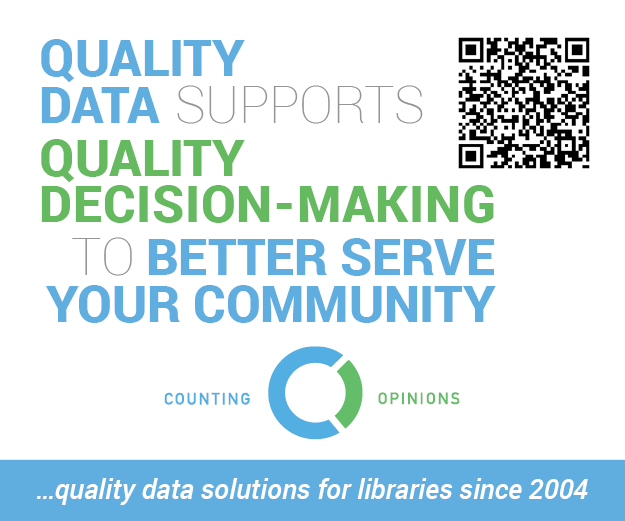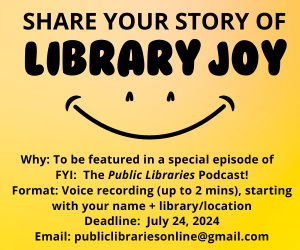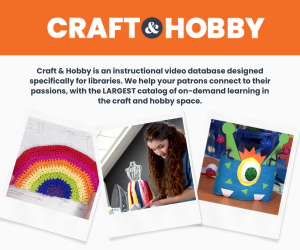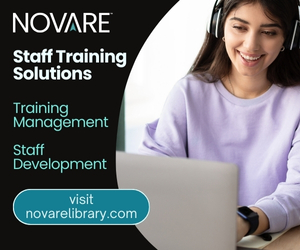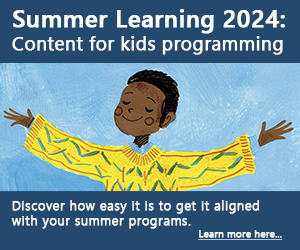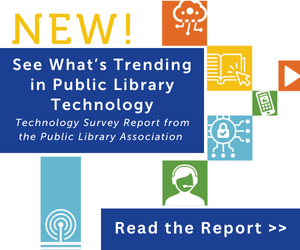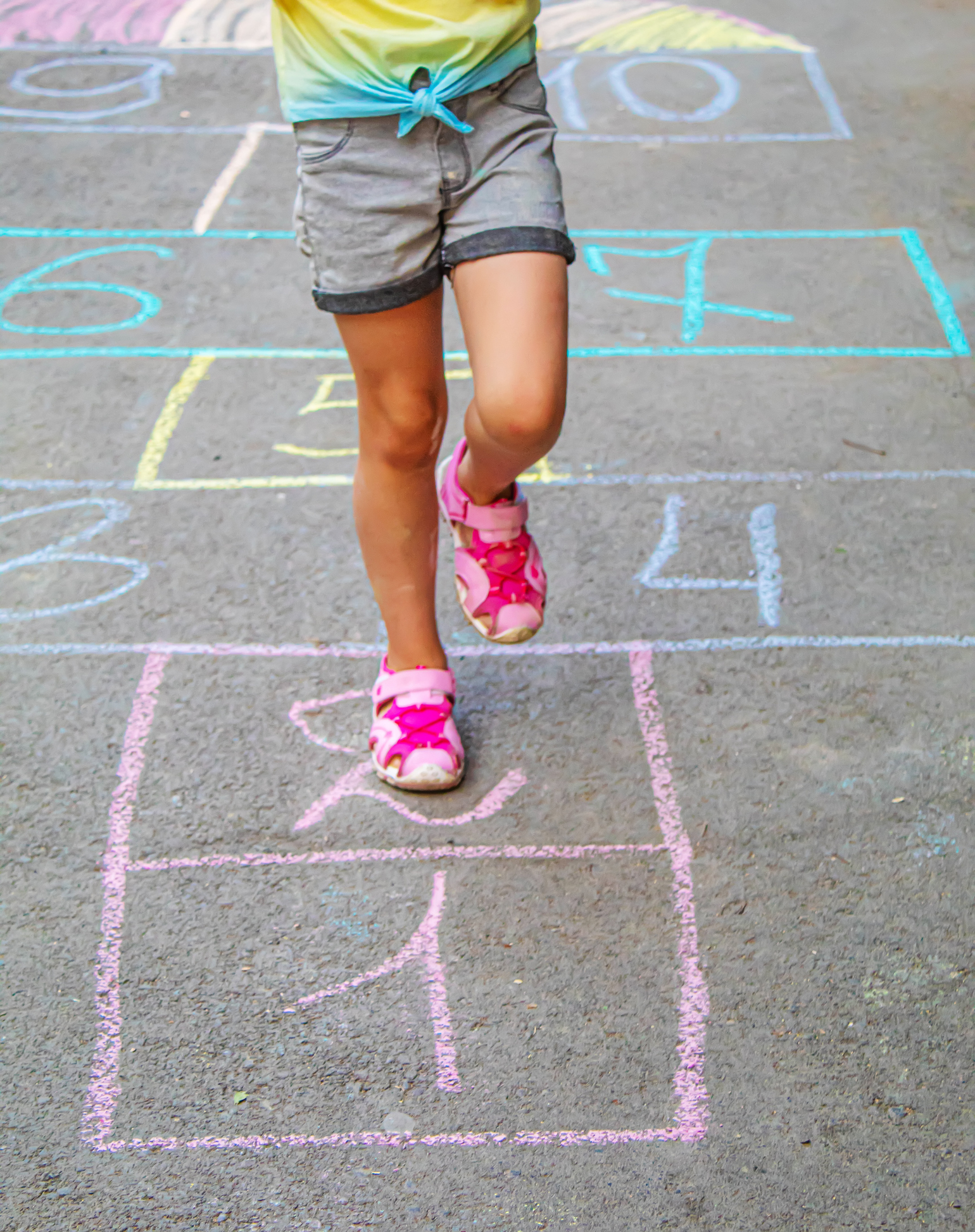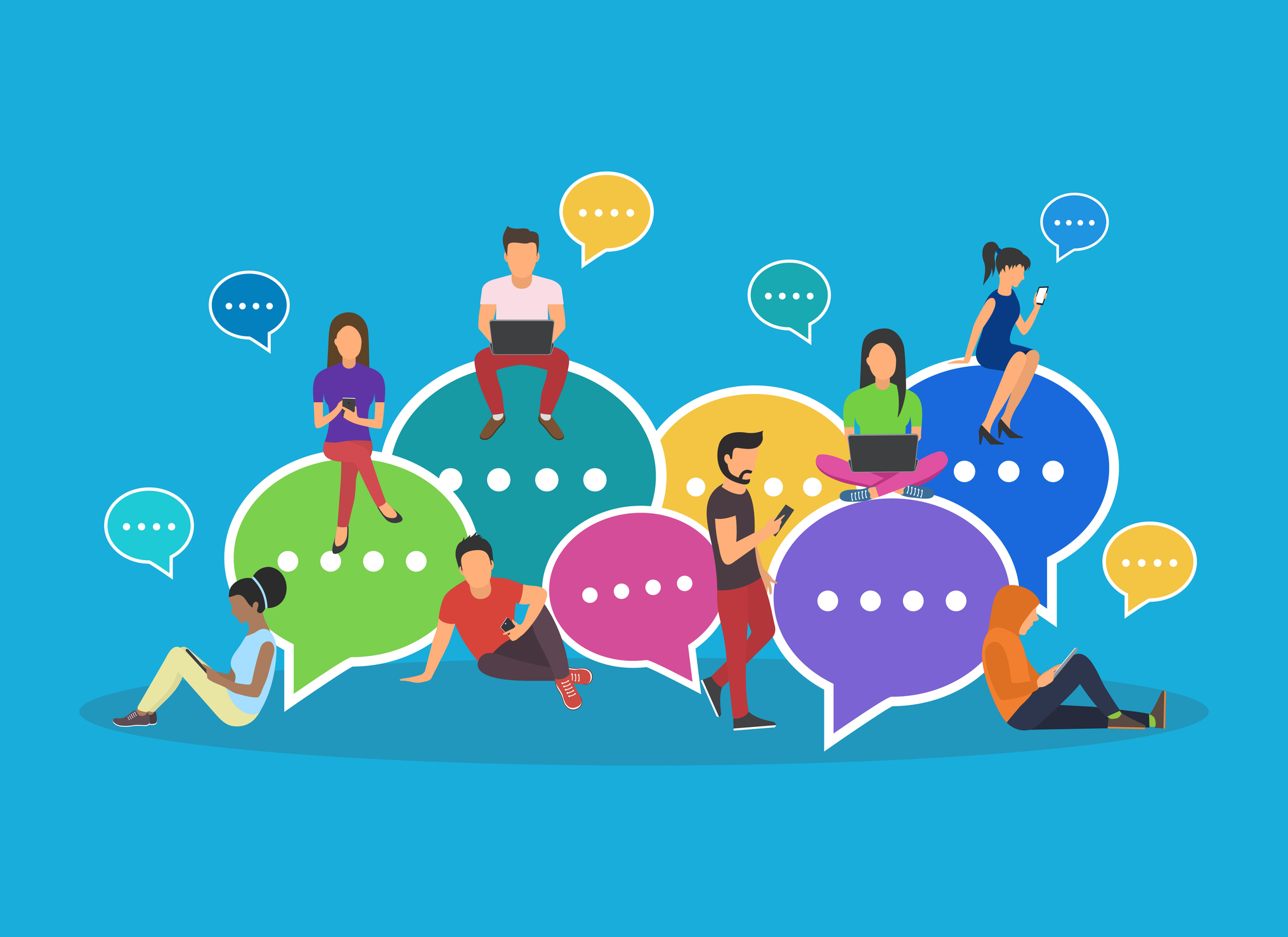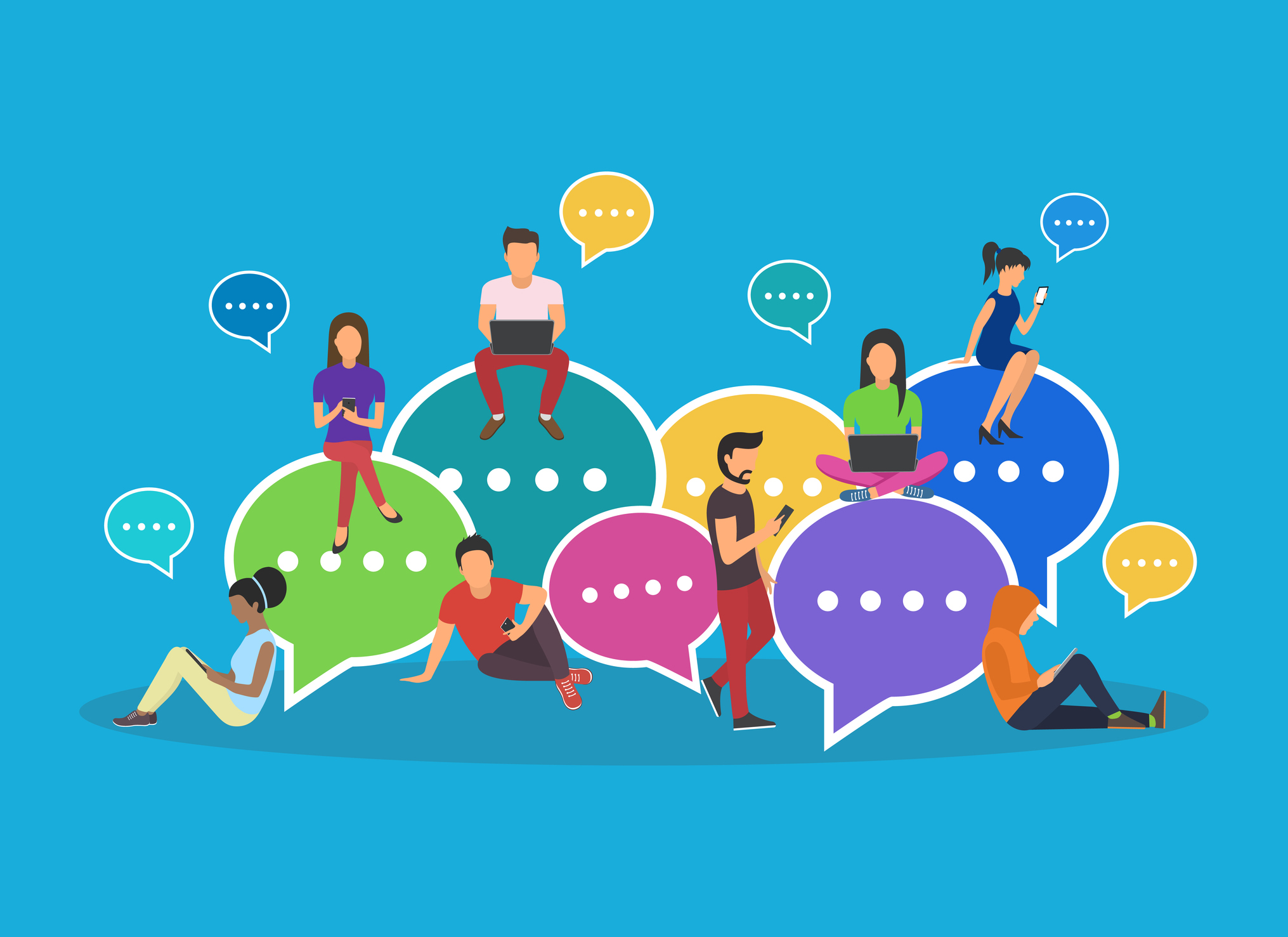Of Tinkers and Technology: Creative Digital Programming for Youth
This is probably going to surprise no one: my wife and I, and our son, live in a highly connected household. The three of us work and play online, jumping seamlessly from computer to tablet to phone to television. Whether we’re planning, budgeting, socializing, or entertaining, using technology to enhance my family’s life has become an expectation, not a novelty.
But a dad has to draw the line somewhere. And when your two-year-old starts shouting “Xbox, stop” at the family iPad in an attempt to pause the latest episode of Yo Gabba Gabba, it’s probably time to start thinking about how kids interact with screens and gadgets. My wife and I have had serious conversations about how our son is going to grow up around technology. With the proliferation of personal devices, apps, and maker tools, youth services librarians need to be having the same conversation.
There are plenty of reasons for libraries to take the lead when teaching technology to kids. The children’s department is often the first place outside the home that a young person feels a sense of belonging. Youth librarians deserve a lot of credit for making the library one of the warmest, most welcoming environments a child can experience. Technology doesn’t have to be in opposition to this. Rather, it’s an opportunity for librarians to show how digital and analog skills can blend together using the same level of humanity that occurs at storytime. It’s a chance to start teaching digital literacy skills at an early age, and help parents and caregivers to recognize that technology can be something more than just an electronic babysitter.
With this in mind, how do children’s librarians seize the opportunity that lies in front of them? Is it possible to walk the line between all the traditional methods that come with fostering a love of literacy, and embracing shiny new tools like 3D printers and personal tablets? I’ve been watching the youth services librarians at my organization grapple with this balance, and seen several new successful programs emerge as a result.
Skokie (Ill.) Public Library’s (SPL) Primary Time+ program gives kindergarteners and first-graders (not to mention their parents) equal opportunities to interact with digital literacy apps and analog early literacy games.1 SPL youth technology librarian Bradley Jones frames these activities with large-group sing-alongs and storytime.2
Holly Jin’s Sensory Storytime3 uses soundboard apps to provide a welcoming environment for children with autism and sensory processing issues. And Jones’ monthly CodeBots group has kids experimenting with Raspberry Pi computers, Lego WeDo kits, and the free programming tool Scratch under the motto of “Try, Fail, Fix.” In each case, these programs have brought a new level of hands-on interaction to the library experience, blending traditional learning styles with a fearless approach to technology. In addition, it has helped to attract whole new sets of patrons—along with their parents.
Enter the Tinkers
SPL is hardly the only library doing this. Spurred on by a presentation4 at the 2012 Illinois Library Association Annual Conference, area youth and teen librarians formed the Tinker Group (http://tinkergroup.wordpress.com) to network and share best practices with one another. “There doesn’t seem to be any other forum to share ideas with other librarians about [technology for youth],” explained Katie LaMantia, teen librarian at the Schaumburg Township (Ill.) District Library (STDL). “It’s really about exploring new ways to bring kids and technology together.”5 If you’re going to venture into uncharted territory, you might as well get a bunch of people to go exploring together.
This shared sense of adventure is what makes the Tinker Group unique. Rather than simply discussing new program ideas for kids, Tinker Group members bring the technology to the meetings and hold their own virtual petting zoos. According to Renee Neumeier, teen librarian at Evanston (Ill.) Public Library (EPL), “You actually leave knowing how to do something. You get time to use all the equipment. It’s kind of like you’re getting to take part in the program yourself.”6 Wilmette (Ill.) Public Library (WPL) youth services librarian Janet Piehl elaborated: “Some of this programming can be very expensive, so it’s really nice to be able to test it out and get other peoples’ opinions and insights about the materials and tools that they use.”7
The camaraderie and experimentation taking place here serves as a useful model for tech-centric youth programming itself. If you’re thinking about jumping into the creative technology pool, a few tips from the Tinkers on getting started follow in the sections below.
Work On One Piece at a Time
If you ask a dozen librarians for their favorite youth technology tool, you’re going to get about three dozen different opinions. It’s easy to feel like you want to do everything. Do you build a Minecraft server or buy a Makerbot? Do you work with tablets only or get robotics kits? These decisions may not be too difficult if you’re using free software like Windows Movie Maker or the iLife suite. But when you have to buy equipment for bigger groups of people, you’ve got to make sure the tools have some kind of extended value.
For Neumeier, that meant making sure kids have enough room to inject their own creativity. “So you might give them an end product, something to work toward, and they can come up with their own way to do it. They might start building a ringtone, and it can become a whole song. If you’re more open with your programming, with no right or wrong way to do something, kids have a chance to explore and build on what they’re learned.”
With so many choices, it’s easy to get overwhelmed, or feel like you’re missing out on something. Focus on what projects your library can comfortably support, and expand as you gain an audience.
A good jumping-off point (and possibly the closest thing to a universal recommendation) is Scratch (http://scratch.mit.edu), the free software tool designed to introduce kids to programming basics. In addition to being free, Scratch is a great place to start because it works with so many other tools, including MakeyMakey, Raspberry Pi, Arduino, and Lego Robotics.
Get Everyone Involved
Building things up bit by bit doesn’t just go for your collection. Collaboration is where creative technology truly thrives, so it’s important to have strong human resources both in and out of the library. Piehl reflected on her program attendees: “Most of the time, parents and caregivers are just curious. They want to know what is involved in a certain program. We’re not forcing anyone to sign up for this. I think a lot of people are just interested in what new skills their kids can build with these offerings.”
This curiosity is an asset you can use to build greater involvement in your programs. Tools like Squishy Circuits and Little Bits make for great opportunities for side-by-side activity with parents and children, and can help expand your audience to younger children.
Outside groups can provide much needed expertise if resources are low. Area hackerspaces and hobbyist Meetup groups can be a resource. At STDL, LaMantia made a point to align with the high schools: “We wanted to make sure we didn’t have software they can’t use, or software that they have and we don’t have.”
Of course, you can’t neglect your own organization. Getting staff from other departments involved can help your coworkers better understand the potential benefits of creative technology. Over time, you can help them launch programs of their own, making better use of your equipment and helping to bridge the gap as patrons move from one age group to another.
Find Some Balance
Most of these creative technology tools exist to help patrons tell their own stories. (Yes, even the robots.) If you can find ways to highlight the similarities between digital and traditional programming, you can create a stronger level of support for both audiences. At WPL, Piehl accomplished this by creating a digital literary magazine that included Scratch programs and stop-motion animation pieces alongside more traditional work. As always, there’s a lot of room for experimentation here. Don’t be afraid to play “Will it Blend?” with all of your offerings.
The public library is a big machine. It’s a complex network full of moving parts, and they don’t always fit together. Creative technology programming for youth adds another set of gears into this mix. Implemented properly, it can help bridge the gap between traditional and digital literacies, creating new library users in the process. It can help libraries play the long game, reinforcing the organization as a purveyor of valuable online resources in addition to its print collections. To make all these pieces fit together is going to take a great deal of hard work and experimentation. What are you waiting for? It’s time to get tinkering.
REFERENCES
- Bradley Jones, “iPads in Storytime: Skokie Public Library Primary Time+,”Little eLit, Feb. 10, 2013, accessed July 23, 2013, and “iPads in Storytime: Primary Time+ (Part II),” Little eLit, June 24, 2012, accessed July 23, 2013.
- Ibid.
- Brenda Hough, “Tech on the Spec(trum): Making Libraries More Accessible for Children With Special Needs,” online presentation by Holly Jin for TechSoup, Mar.26, 2013, accessed July 23,2013.
- Amanda Jacover et. al, “The Future is Fun: Technology Programs for Youth,” presentation, Illinois Library Association Annual Conference,Oct. 9-11, 2012, Peoria,Ill. Handouts accessed July 23,2013.
- Katie LaMantia, interview with the author via Skype, May 7, 2013.
- Renee Neumeier, interview with the author via Skype, May 7, 2013.
- Janet Piehl, interview with the author via Skype, May 7, 2013.
Tags: digital programming

